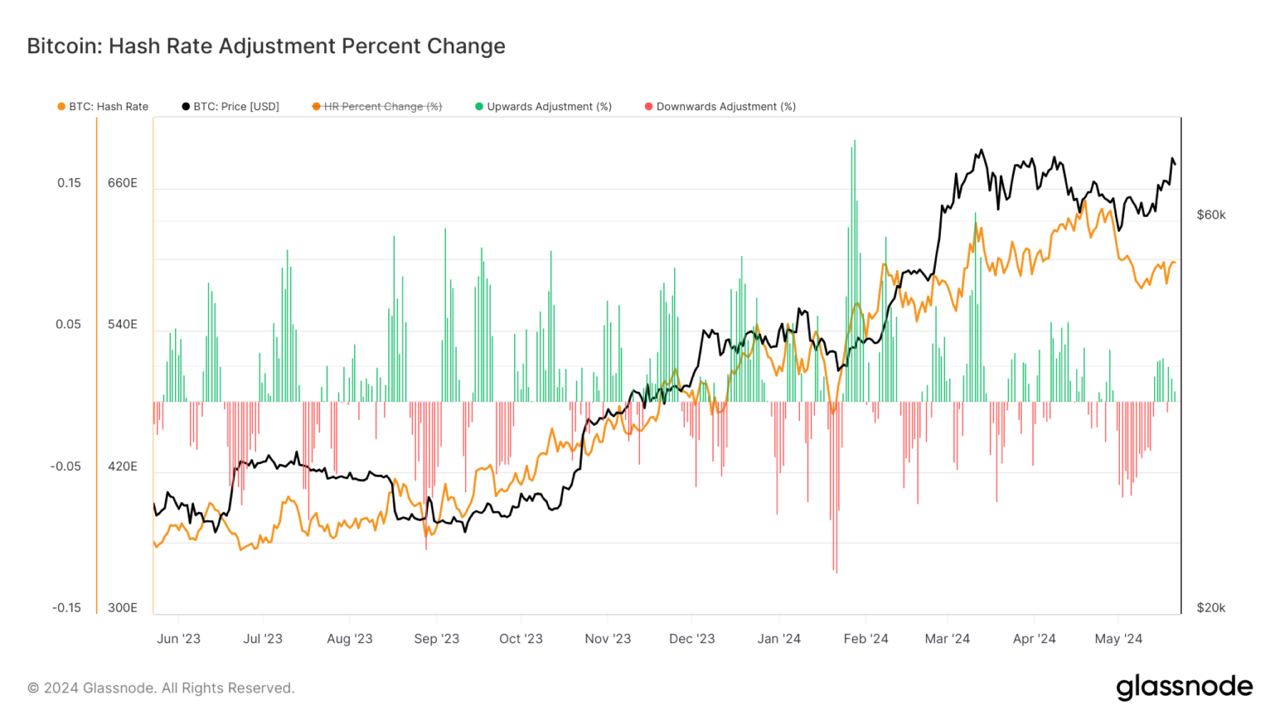
Expected Slight Increase in Bitcoin Difficulty Amidst Texas Heat Impact on Hash Rate
By: TOGRP
May 22, 2024 10:30 PM / 0 Comments International News ZentaNewsDesk Bitcoin Banking and Finance China
The dynamic landscape of Bitcoin mining is set to experience a slight increase in mining difficulty, despite potential challenges posed by the extreme heat in Texas, which could impact the overall hash rate. This development highlights the intricate balance between environmental factors and the technological demands of cryptocurrency mining.
Understanding Bitcoin Mining Difficulty
What is Bitcoin Mining Difficulty?
Bitcoin mining difficulty is a measure that determines how hard it is to find a new block in the Bitcoin network. The difficulty adjusts every 2016 blocks, or approximately every two weeks, to ensure a consistent block time as the network's hash power changes.
Importance of Regular Adjustments
Regular adjustments are crucial for maintaining the network's stability and security, ensuring that block times remain close to ten minutes on average, regardless of fluctuations in total network hash power.
Impact of Texas Heat on Mining Operations
Challenges Posed by Extreme Temperatures
The severe heat in Texas poses significant challenges for Bitcoin miners, primarily due to increased cooling requirements and potential overheating risks for mining equipment.
Potential Effects on Hash Rate
High temperatures could lead to reduced operational efficiency and forced downtimes for cooling, thereby impacting the overall hash rate—the total computational power used to mine and process transactions.
Expected Changes in Mining Difficulty
Anticipated Increase
Despite the heat, the overall mining difficulty is expected to increase slightly. This adjustment reflects broader trends in the network's computational power and the ongoing commitment of miners to secure the network.
Strategic Adjustments by Miners
Miners might adapt their operations, such as optimizing cooling systems or adjusting workloads during peak heat hours, to mitigate the impact on productivity and equipment longevity.
Broader Implications for the Bitcoin Network
Sustainability Concerns
The situation in Texas highlights broader sustainability concerns associated with Bitcoin mining, particularly in regions prone to extreme weather conditions.
Innovation in Cooling Technologies
This challenge also drives innovation in cooling technologies and energy-efficient mining practices, which are critical for the long-term sustainability of high-intensity computational activities like Bitcoin mining.
Conclusion
The slight increase in Bitcoin mining difficulty reflects the network's robust design and the miners' resilience in adapting to environmental and technological challenges. However, the ongoing heat wave in Texas serves as a reminder of the environmental impacts and operational challenges that need to be addressed to ensure the sustainable growth of the cryptocurrency mining industry.
FAQs
-
What does an increase in Bitcoin mining difficulty indicate?
- It indicates that more computational effort is required to mine new blocks, reflecting changes in network hash power.
-
How does extreme heat affect Bitcoin mining operations?
- It can reduce operational efficiency and increase the risk of equipment failure due to overheating.
-
What measures can miners take to combat heat-related issues?
- Miners can improve cooling systems, adjust operation times, and invest in more energy-efficient mining hardware.
-
What is the significance of hash rate in Bitcoin mining?
- The hash rate measures the total computational power being used to process transactions and mine new blocks, directly influencing the network's security and efficiency.
-
How do environmental factors impact the sustainability of Bitcoin mining?
- Environmental factors like temperature can significantly affect energy consumption and operational efficiency, highlighting the need for sustainable mining practices.
